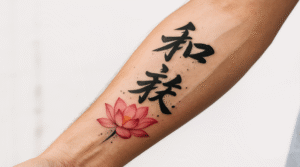Henna tattoos, also known as Mehndi, are a form of temporary body art that has been used for centuries in traditional Indian, African, and Middle Eastern cultures. Today, henna tattoos are popular all over the world for their intricate designs and natural, temporary beauty. In this article, we’ll explore the art of henna tattoos, their history, and how to care for them.
What is Henna?
Henna is a plant that grows in hot, dry climates and has been used for centuries to dye hair and create temporary tattoos. The leaves of the henna plant are dried, ground into a powder, and mixed with water or other natural ingredients, such as lemon juice, sugar, or essential oils. When applied to the skin, henna paste creates a temporary stain that can last up to two weeks.
History of Henna Tattoos
Henna tattoos have been used for centuries in traditional Indian, African, and Middle Eastern cultures to celebrate weddings, holidays, and other special occasions. The intricate designs and patterns are created using a cone-shaped applicator and can range from simple geometric shapes to elaborate, floral designs.
In these cultures, henna tattoos are believed to have protective and healing properties, and are often used to ward off evil spirits and bring good luck. Today, henna tattoos have become popular all over the world as a form of temporary body art and self-expression.
Caring for Henna Tattoos
Henna tattoos are temporary, but they still require proper care to ensure they last as long as possible. Here are some tips for caring for your henna tattoo:
- Avoid water for the first 24 hours: After your henna tattoo is applied, avoid getting it wet for the first 24 hours. This will allow the henna paste to dry and create a more vibrant stain.
- Leave the paste on for at least 4 hours: To get the most vibrant stain, leave the henna paste on your skin for at least 4 hours. The longer you leave it on, the darker the stain will be.
- Scrape off the paste: After the henna paste has dried, gently scrape it off with a butter knife or similar object. Do not wash it off with water.
- Avoid soap and water: For the first day or two after getting your henna tattoo, avoid washing it with soap and water. This will help the stain last longer.
- Apply lemon juice and sugar: To help the stain develop, apply a mixture of lemon juice and sugar to the tattoo. This will help the henna paste adhere to your skin and create a darker stain.
- Moisturize regularly: To keep your henna tattoo looking its best, moisturize the area regularly with a natural, fragrance-free lotion.
Conclusion
Henna tattoos are a beautiful and temporary form of body art that have been used for centuries in traditional Indian, African, and Middle Eastern cultures. With intricate designs and natural, temporary beauty, henna tattoos have become popular all over the world as a form of self-expression. To care for your henna tattoo, avoid water for the first 24 hours, leave the paste on for at least 4 hours, scrape off the paste, avoid soap and water, apply lemon juice and sugar, and moisturize regularly. With proper care, your henna tattoo can last up to two weeks and be a beautiful work of art.








